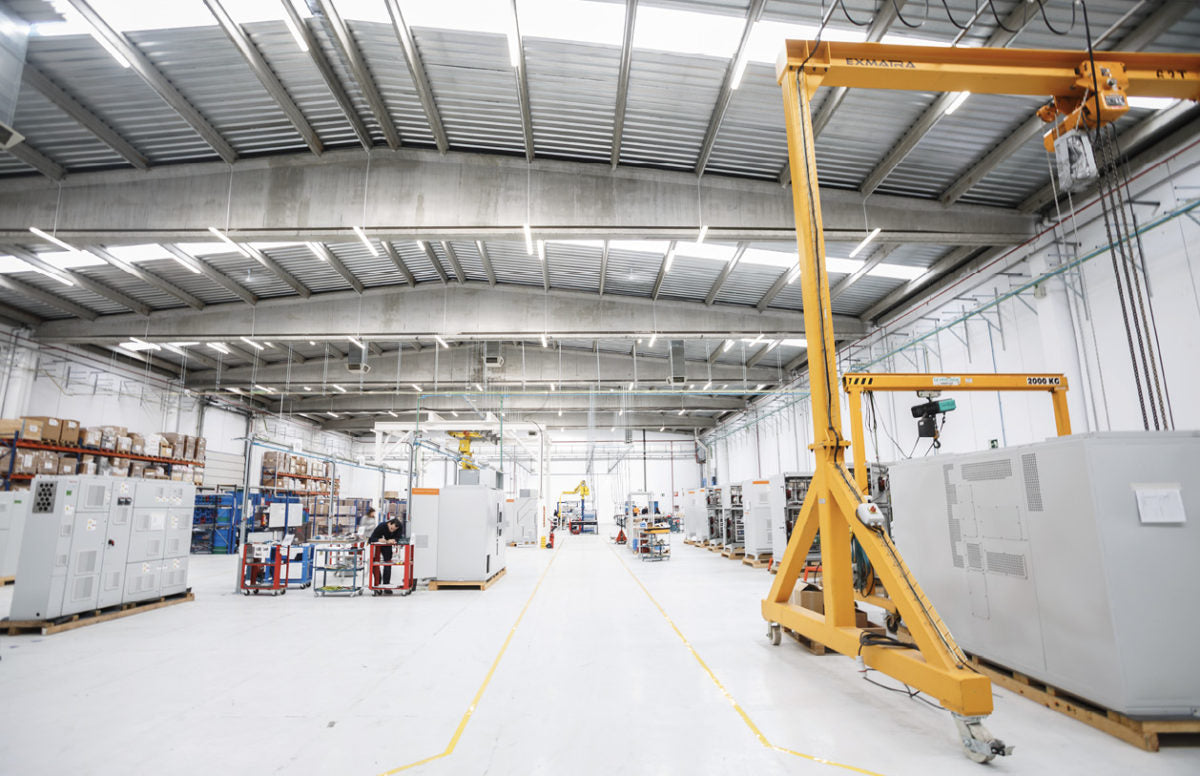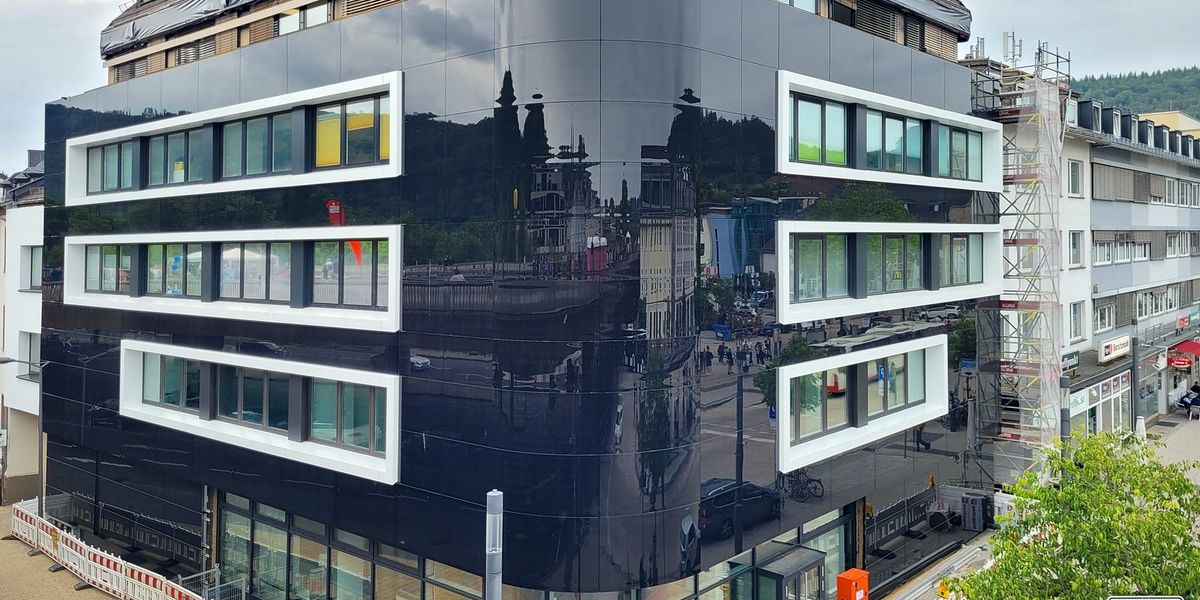https://www.pv-magazine.com/2022/07/09/the-weekend-read-europes-inverted-solar-ambition/
The weekend read: Europe’s inverted solar ambition

Gamesa Electric manufactures components for the wind and solar industries, which gives the Spanish company an advantage in terms of production volume.
Image: Gamesa Electric
From pv magazine 06/2022
A picture of inverter maker struggles was painted at this year’s Intersolar Conference by Marc Dalderup, director of business development at mounting solutions company Esdec. In a guide to the current supply chain issue, Dalderup echoed key talking points: inverters have been an especially severe pain point within the solar supply chain. Unusually, some rooftop solar projects he’d seen in Europe had stopped waiting, opting to install solar modules on rooftops even without the inverters. Clearly, inverter delivery times are a serious challenge, even for local manufacturers waiting on semiconductors.
Solar inverters have been designed and made in Europe since Germany kickstarted the industry in 2000. IHS Markit put the European share at around 24% of the world’s inverter market in 2020, falling over the past decade. Germany’s SMA alone shipped 50% of the world’s single-phase inverters in 2010 and is now closer to a single-digit share. The other 76% is mostly from China, where Huawei and Sungrow alone ship more gigawatts than Europe’s makers combined.
Even so, Europe’s inverter manufacturers have largely remained competitive and viable when compared to solar module manufacturing, employing thousands of engineers and workers. Meanwhile, module manufacturing was completely overwhelmed by competition from China, to now register barely a single percentage point of global production.

Tangential industries
One reason is Europe’s existing manufacturing base and tangential industry. IHS Markit Senior Analyst Cormac Gilligan noted the PV sector is a direct beneficiary of the enormous automotive industry through Germany, Czech Republic, France, and Spain, and the supply chains and associated workforce. That alone is a significant factor in maintaining EU manufacturing in inverters.
“Europe has the fortune of tangential industries that provide that critical mass of manufacturing. Obviously, the automotive industry is one, including the luxury car makers in Germany. The business of heavy industry is significant as well, with big machines, diesel engines and turbomachinery being made,” said Gilligan.
Gilligan also highlighted that PV module making demands lowest cost from scale and volume, with limited technical edge, whereas inverters require more support, servicing, and technical capabilities. In terms of industry struggles, Gilligan pointed out the various mix of consolidations and exits that have happened over the years as inverter margins were squeezed. One particularly volatile year was 2019, when ABB sold its inverter business to Italian manufacturer Fimer, Schneider Electric pulled out of utility-scale PV, and Siemens acquired string inverter maker Kaco.
Front lines
In 2022, how do Europe’s inverter makers themselves see their operations, competitors, and the future? The answers are mixed: largely positive about the growth in renewable demand, but cautious on competition.
Austrian manufacturer Fronius, and Spanish manufacturers Gamesa Electric and Ingeteam spoke with pv magazine, each offering its own perspective on locations, competition, potential EU support, and technical and sustainability advantages.

CEO of Gamesa Electric.Image: Gamesa Electric
Gamesa Electric has two main factories in Spain. Madrid serves as the manufacturing hub, with a headcount of around 250, including engineers. The second location in Valencia is a converters and control manufacturing plant with around 100 workers – but labor is only a small part of the story, explained Juan Barandiaran, CEO of Gamesa Electric. “The labor cost of power electronics in our inverter is only around 5% of the cost. Even if you reduce labor costs two or three times, it’s not significant,” said Barandiaran. “More significant is that we use Tier 1 components mostly manufactured in Europe. They’re often heavy, so you save on logistics: both the price, and the delivery time.”
Barandiaran explained that PV is an unusually fast and demanding market compared with other industrial sectors, which gives local manufacturers advantages for local projects. “It’s the most aggressive market I know. Inverters are usually bought by EPC companies and price is the main driver in this market. Aspects such as efficiency, reliability and low opex are becoming important, as experienced customers are thinking more in terms of LCOE. But customers still expect you to deliver in 20 or 25 weeks. That’s difficult to do if you’re manufacturing on the other side of the world.”
Gamesa’s ties to wind, where the company provides electrical components for turbines, provides an additional advantage: Volume. “You need a lot of volume to [manufacture successfully], and we leverage on wind volume,” said Barandiaran. “The leverage of volume is huge. It doesn’t matter how good you are, you need to fill your factories and have long-term stability.”
In terms of skilled staff, a number of higher education institutions in the region provide engineers, and to keep employing them requires stability. “We want to grow, we see growth and the demand is certainly there. If you can grow, you need to grow sustainably and profitably. You need demand, but also long-term stability.”
Austria’s view
Austrian inverter supplier Fronius said manufacturing in Europe has clear advantages in terms of technology and innovation leadership. The company, with a tradition in welding before becoming a leading inverter maker, won pv magazine’s Annual Publisher’s Pick award in 2021, thanks in part to its emphasis on sustainability.
Popular content
In terms of how Fronius has maintained a position of strength, Martin Hackl, the company’s global director solar energy, said a major factor was prosumers, explaining that the old feed-in tariff market required only basic, commoditized products. “When the first prosumers arose to the concept of self-consumption, around 10 years ago, we found a great position in the market. That was a huge opportunity for us because it’s about understanding total energy consumption, managing energy flows, how to store energy, and so on,” said Hackl. “We were one of the very first inverter companies to recognize that. We’re known for very smart and simple-to-operate prosumer solutions.”
In supporting prosumers, Hackl explained that installers generally provide the consumer-facing sales, with Fronius having some 4,500 or more trained and educated partners globally who assist consumers in finding appropriate solutions.
Life-cycle opportunities
Fronius leans heavily into the narrative that European power electronics production is inherently more sustainable, and manufacturing in lower-cost environments outside of Europe may fail those goals. “It does not help to make or use the dirtiest product, but the one that produces the cleanest kilowatt hour when all aspects are considered,” said Hackl.
“We need to look very deeply into the carbon footprint of the products and life cycle assessments and repairability. We have a long history, with a very high level of social standards for sustainability and quality.
“We have deep value creation within our house: we try and do everything, from the PCB, metal working, we do our own inductances, cable trees. We have around 2,300 employees in production. Many of the others just assemble things,” said Hackl.
“And on real sustainability, we do not speak only about carbon footprints, but sustainability in the sense of quality, social responsibility, and environment. If you have many things under control, you can actually see it and manage it. In Asia, for example, it gets much more complicated.”
Regarding political efforts from industry peers for sector protection, such as a carbon tax, Hackl agreed, “I am very much in favor of that. It’s no longer enough just to produce one kilowatt hour of solar energy. It needs to be the most sustainable.”
Political push
Spanish inverter supplier Ingeteam has around 400 workers in its biggest manufacturing facility in northern Spain. Jesus Echarte, Ingeteam’s global commercial director, solar PV systems, and Vincente Aguilar, solar pre-sales manager, together said hints that EU politicians are promising to guarantee locally sourced and built devices, to avoid what happened with panel manufacturers, would be wholly supported.
“I mean, if we look at the past, we’re destroying the industry here,” said Aguilar. “We don’t want to play like this. If I take my factory to China, the base salaries are not at the right levels. And we go to a country where we don’t know the rules of the game because they aren’t democratic. We will lose, because if you play with the same tools and rules that they play, they will do it better. Everything is in the hands of the politicians.”
Aguilar suggested that the question of why European manufacturing can continue is upside-down, instead asking why manufacturing in China is winning. According to Ingeteam, local manufacturing needs political support.
“Take carbon footprint. Europe is rapidly electrifying but we’re buying components from a country which is not fulfilling any carbon protocol or agreement, and then sending everything in a vessel and consuming material and emitting carbon,” said Aguilar, who argued that a fairer approach would be where local businesses have more advantages, and importers have some handicaps. “When I go to the US, I have to send my products from Spain to the US, and I have to follow their rules. If you go to South Africa or Brazil, it’s the same. Local content matters,” said Aguilar.
“If they want to manufacture here in Europe, that’s fine and we’re ready to compete,” added Echarte. “We love competing. But we want the same rules; that’s what is fair and what we are fighting for.”
In taking advantage of its location, the pair emphasized the company’s position in the supply chain means it sees itself not just as a manufacturer but as a technological partner. “We aren’t commodity manufacturers. We’re technological partners for the lifetime of a project. We’re happy to compete, happy to hear the needs of the market, but don’t forget the lifetime, and don’t forget having something balanced for the future of our kids, as well,” said Aguilar.
Education answer
Considering the question of how manufacturing skills continue in Europe, Fronius’ Hackl gave an answer from his background that may explain the continuing success of manufacturing in Europe: the technical schooling and apprenticeship education system for early school-leavers, which is found in Austria, Germany, and other European countries.
“I would say in Austria, one of the bases is still the education system,” said Hackl. “At age 16, you can decide if you’d like to continue to go to school, or you decide you start to work via an education scheme in a company. [Fronius] has around 150 young people each year, who train on the job in various forms including technical jobs such as metal forming, electrical work, welding, or bookkeeping and accounting, and we love them. I myself did this,” said Hackl. “I went to a higher technical school for electrical engineering, where after a five-year program, I could become an engineer at the workplace or still go to University. So maybe this is part of the answer.”
This content is protected by copyright and may not be reused. If you want to cooperate with us and would like to reuse some of our content, please contact: editors@pv-magazine.com.




